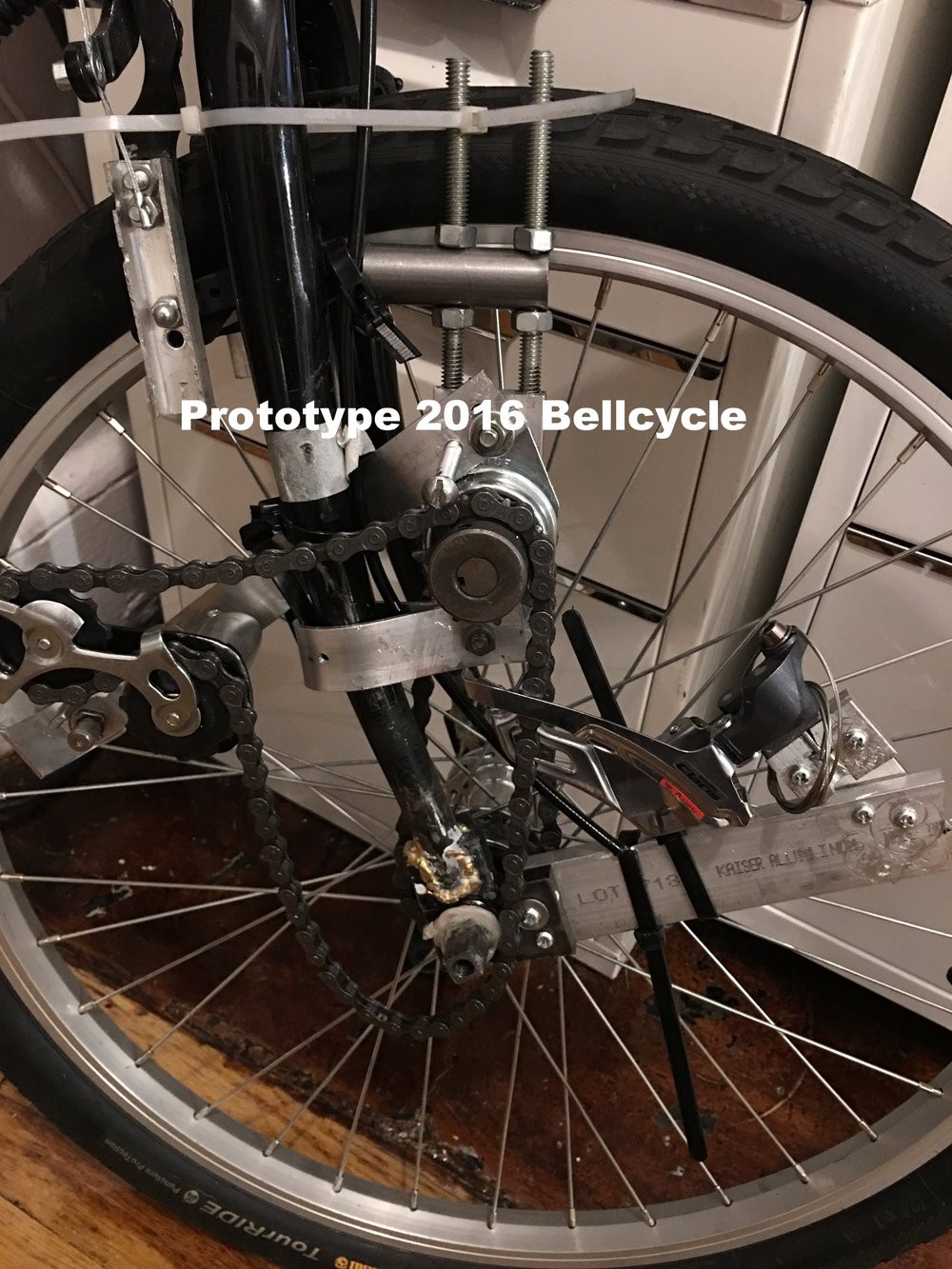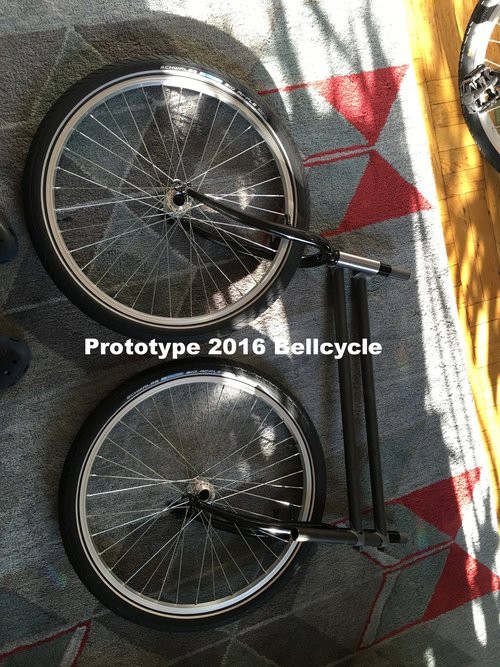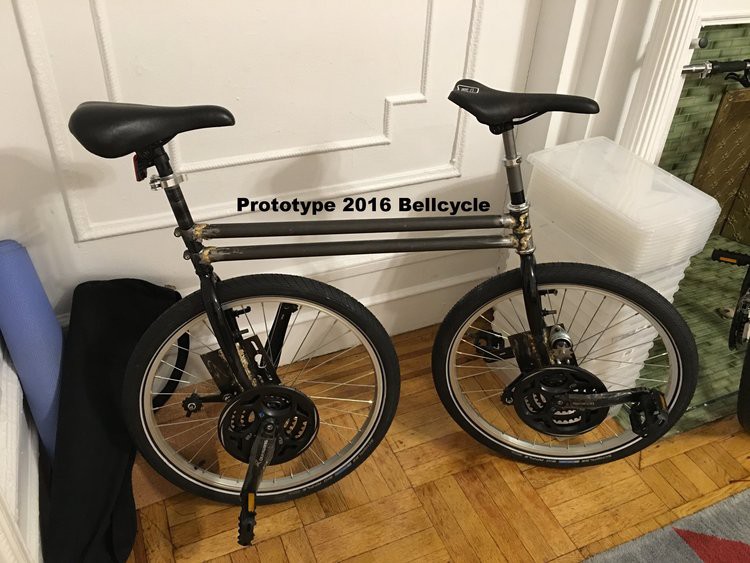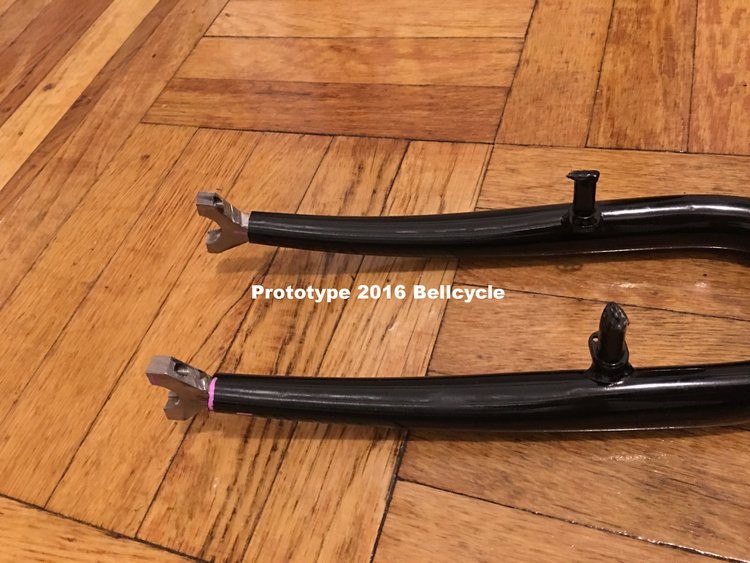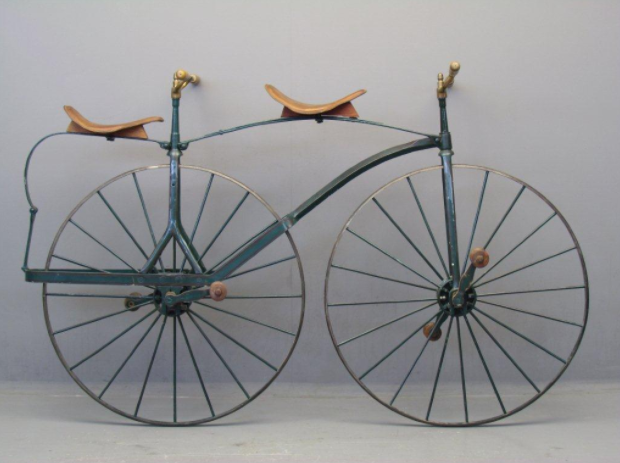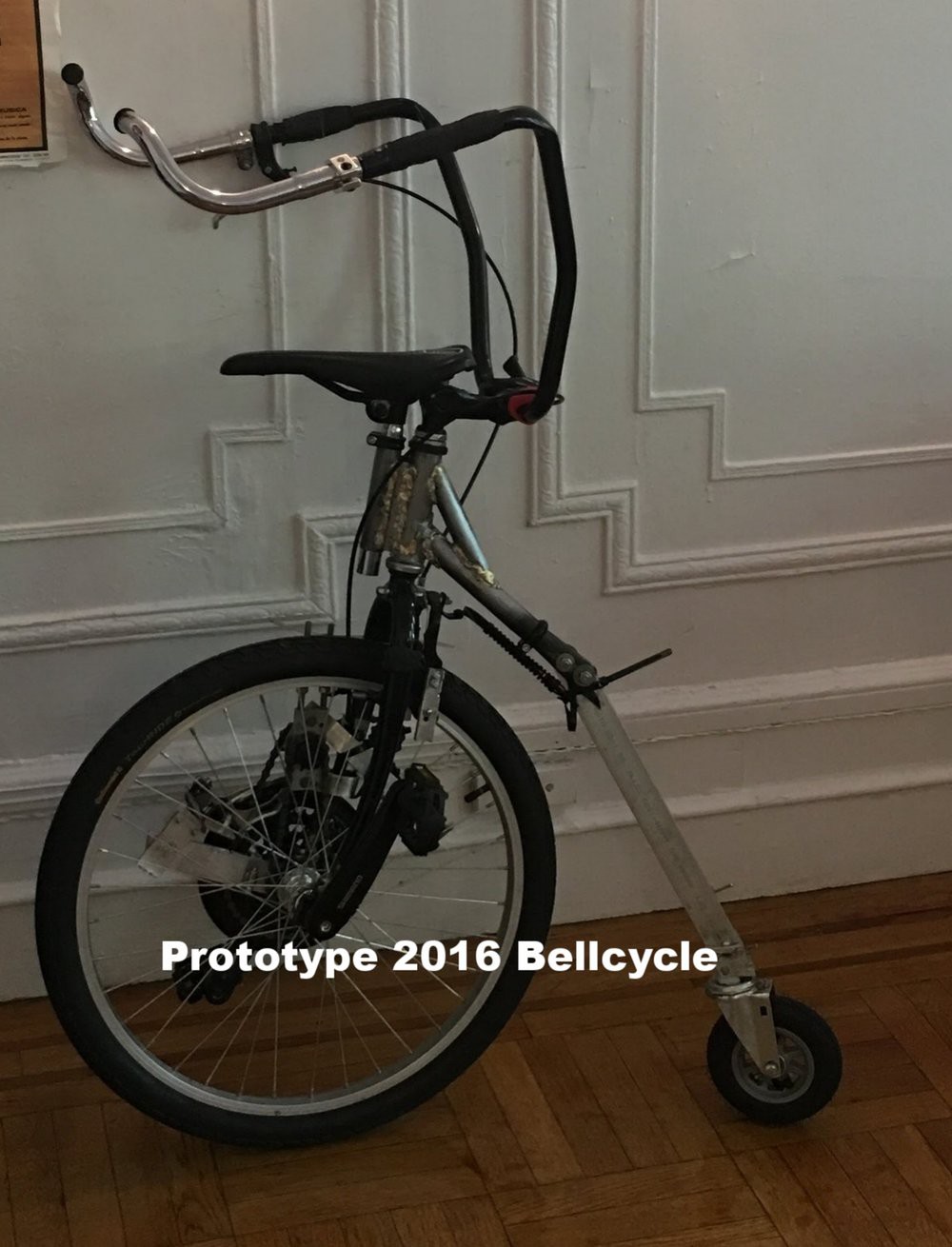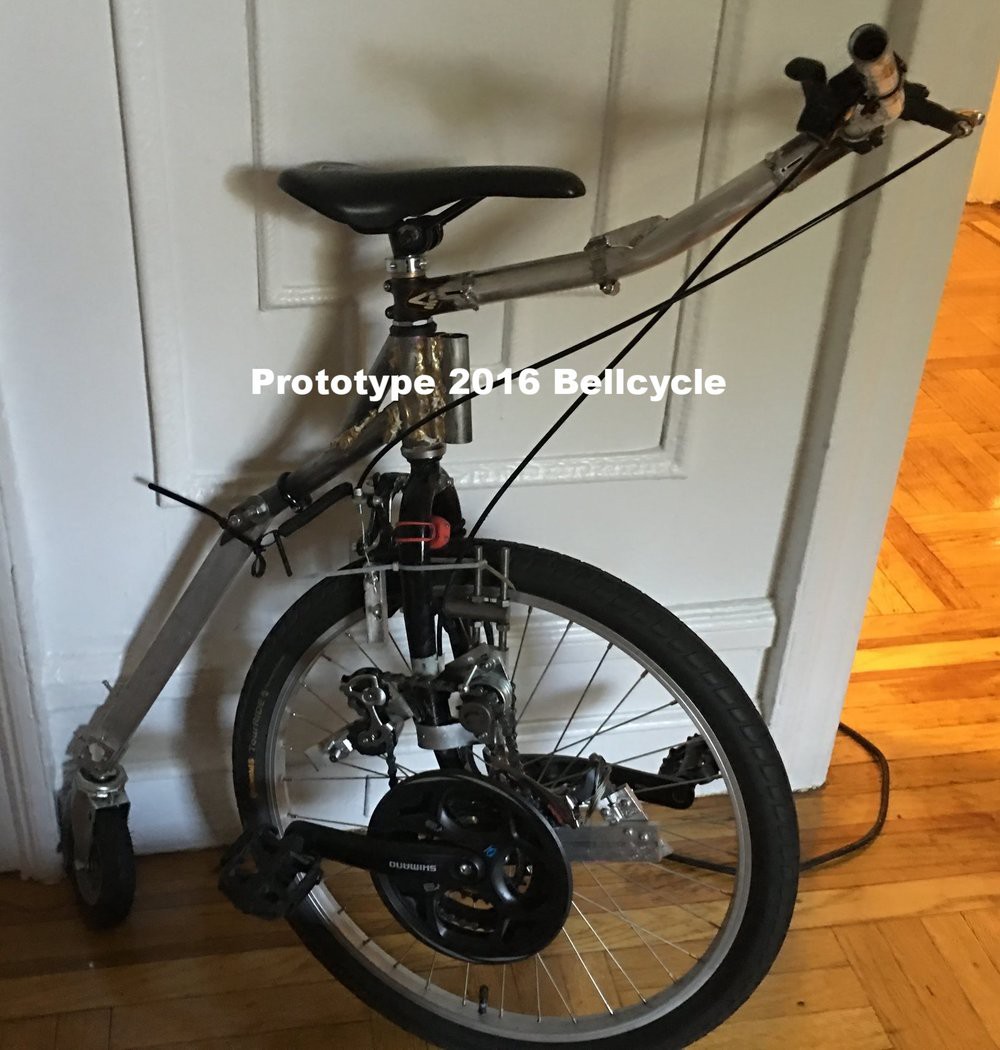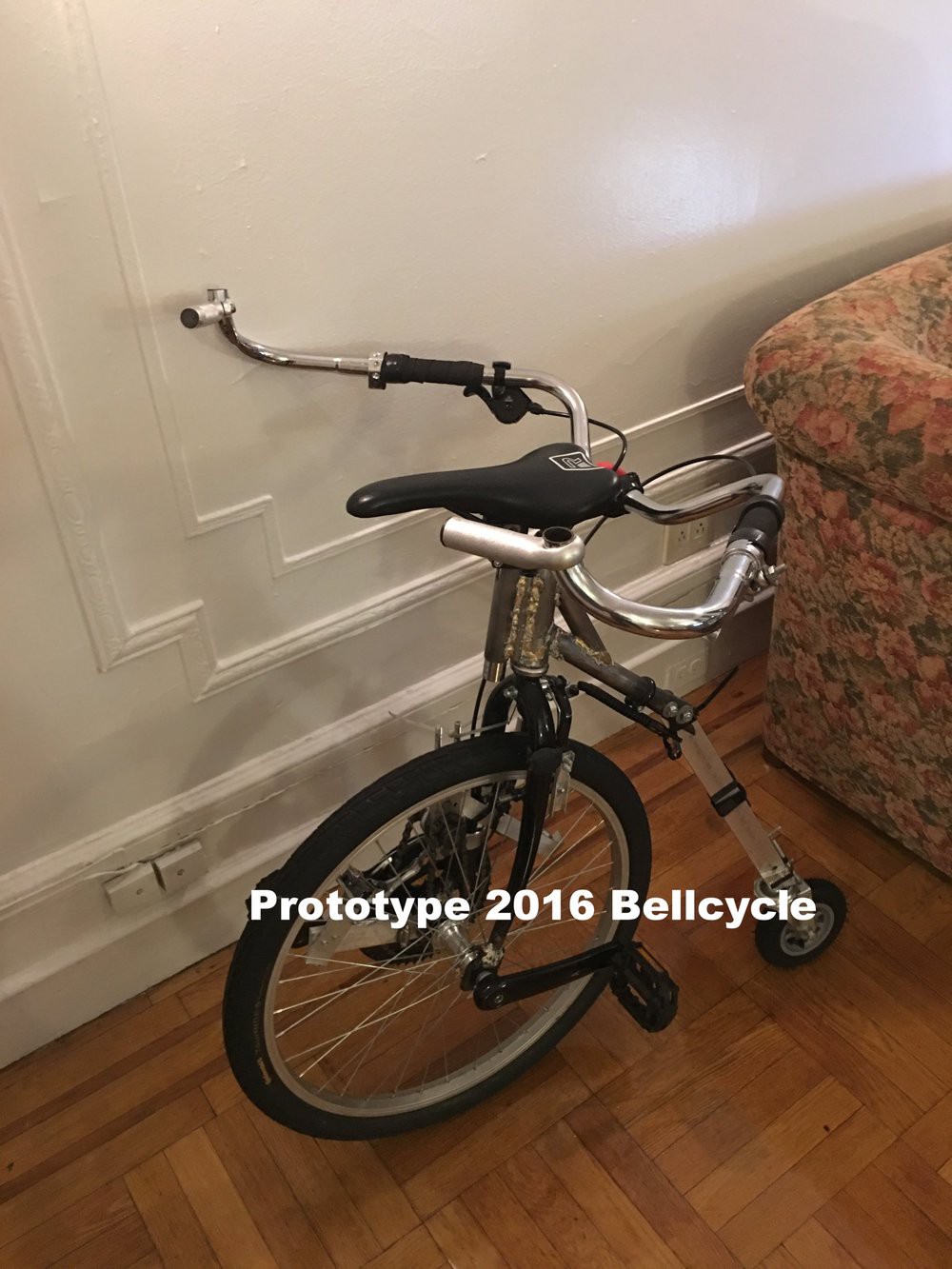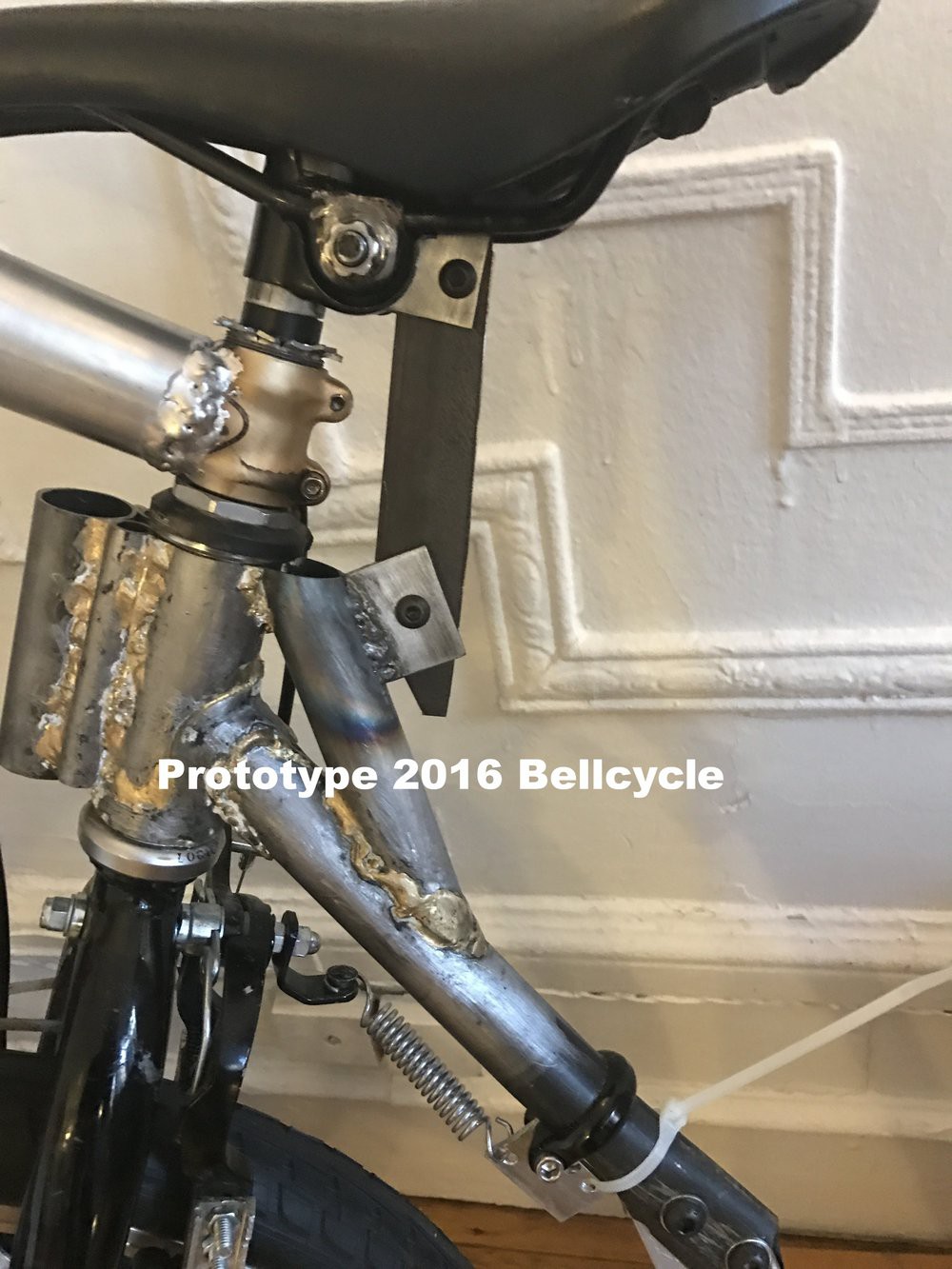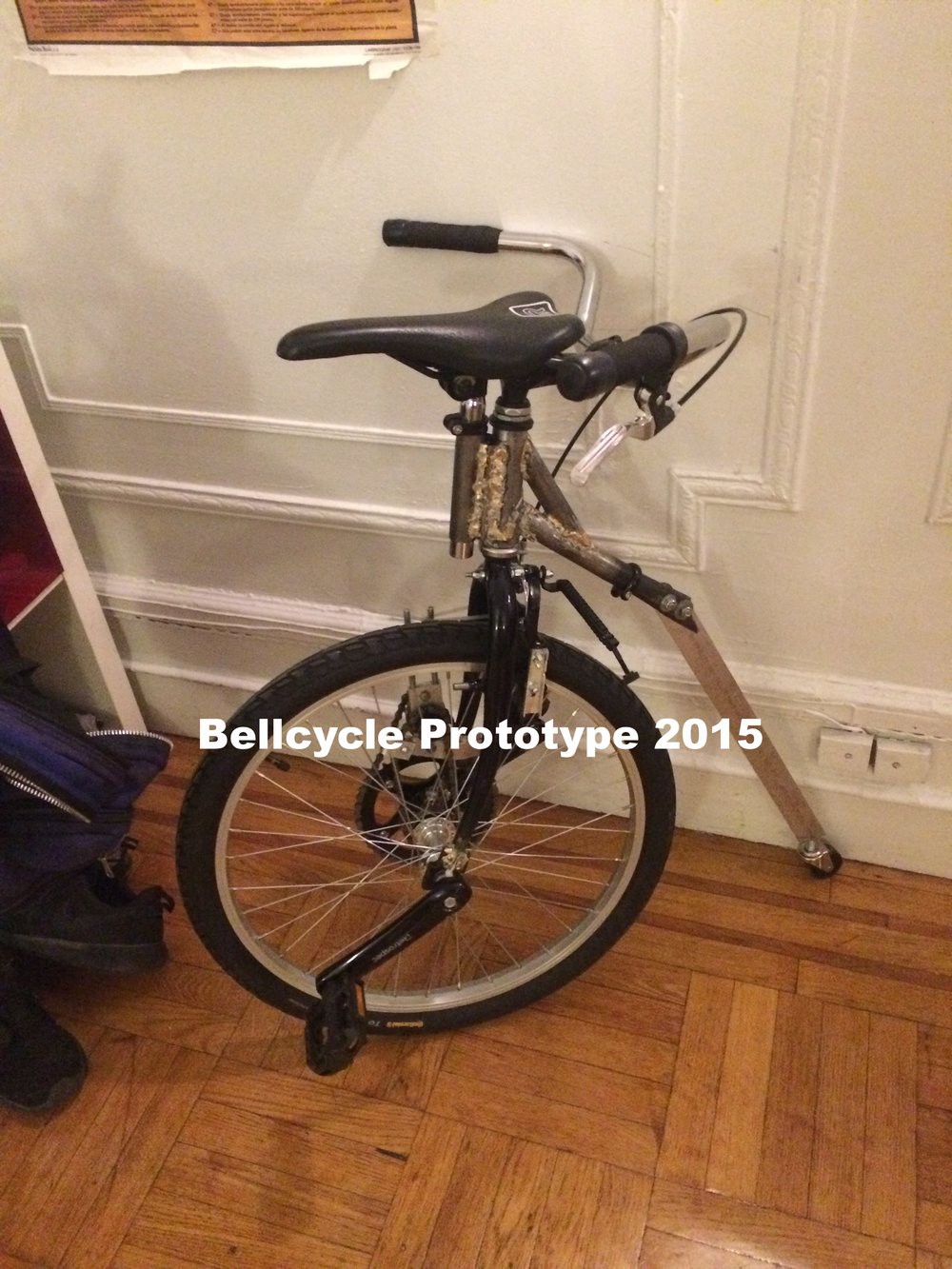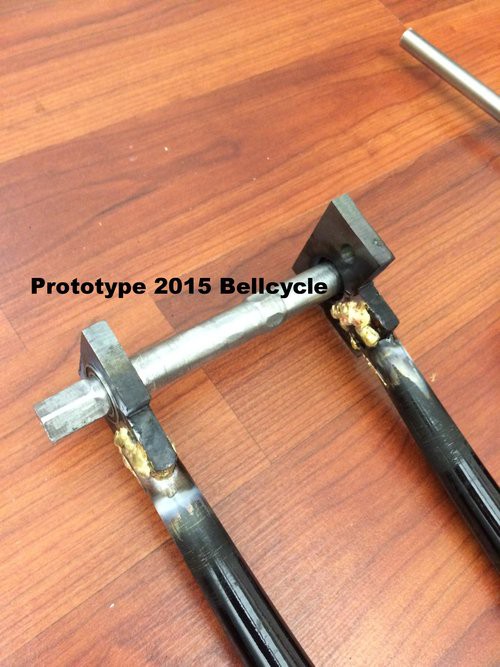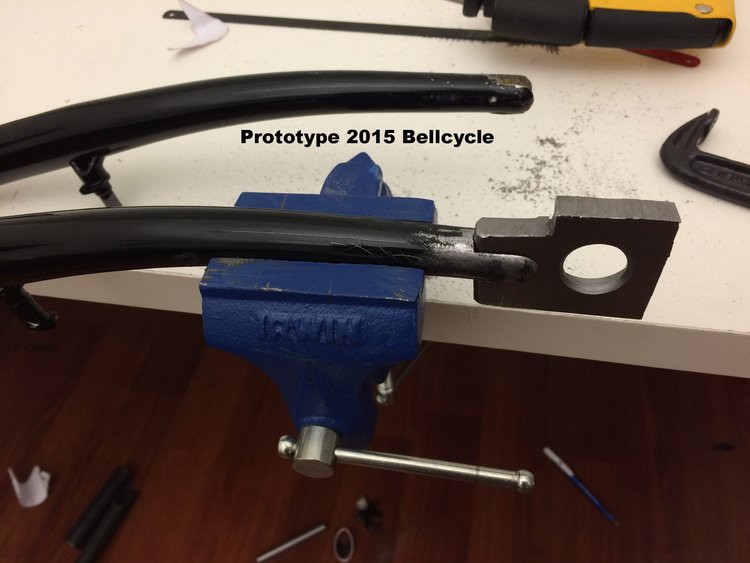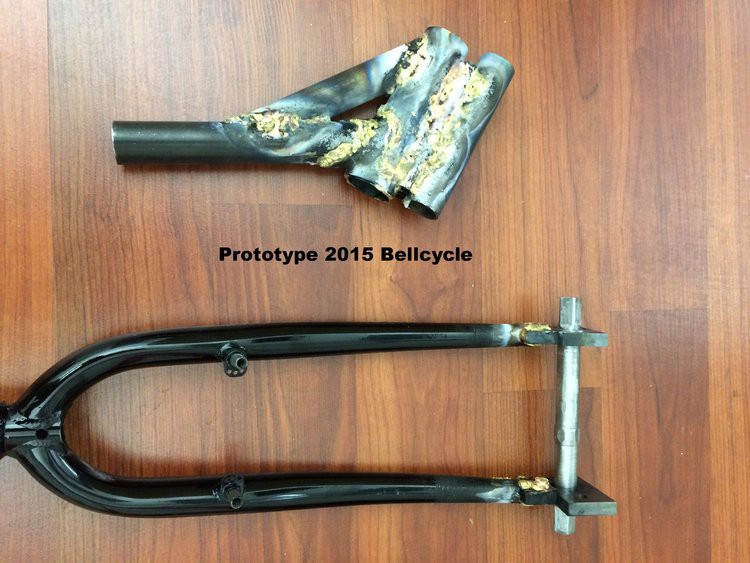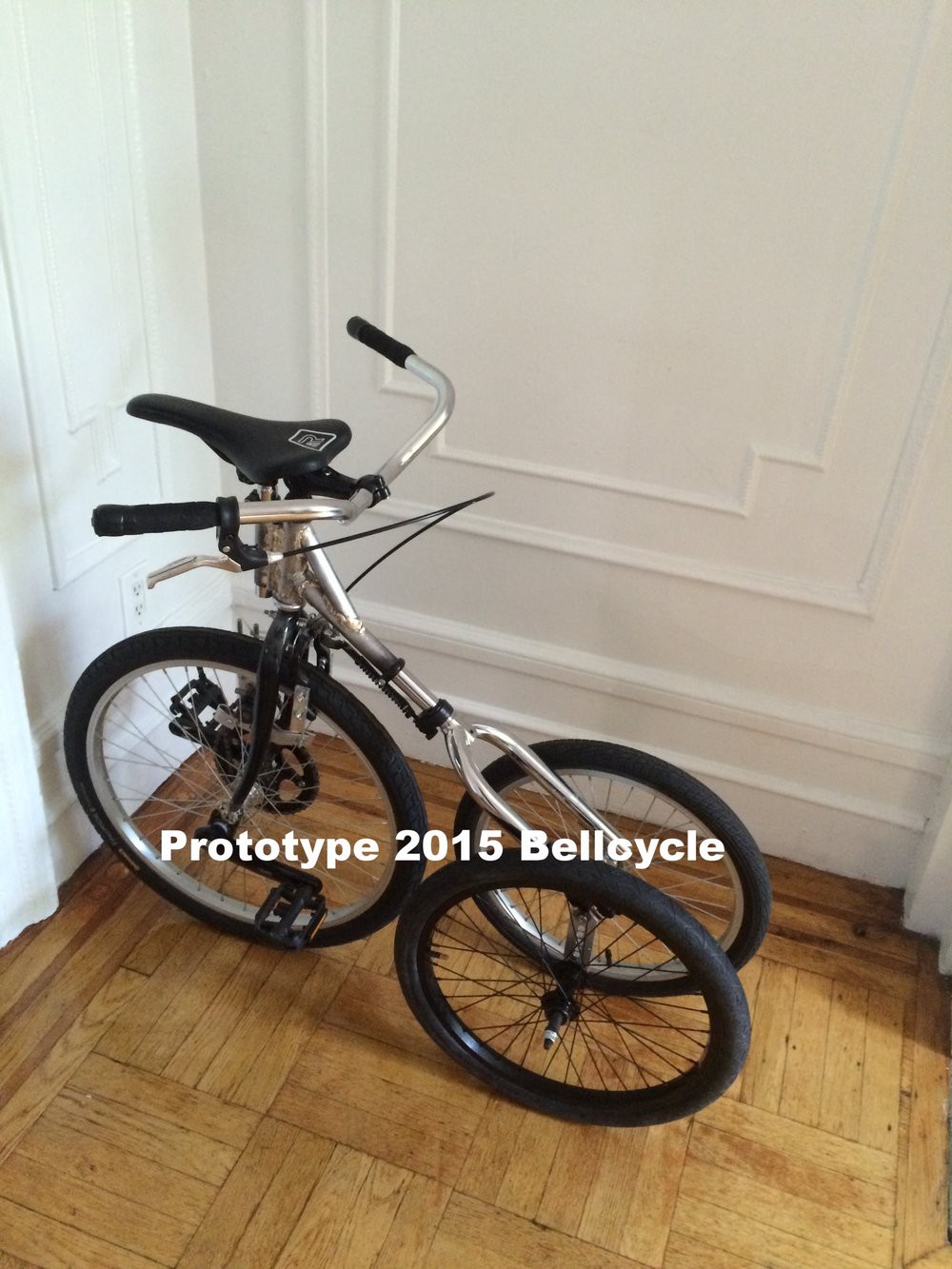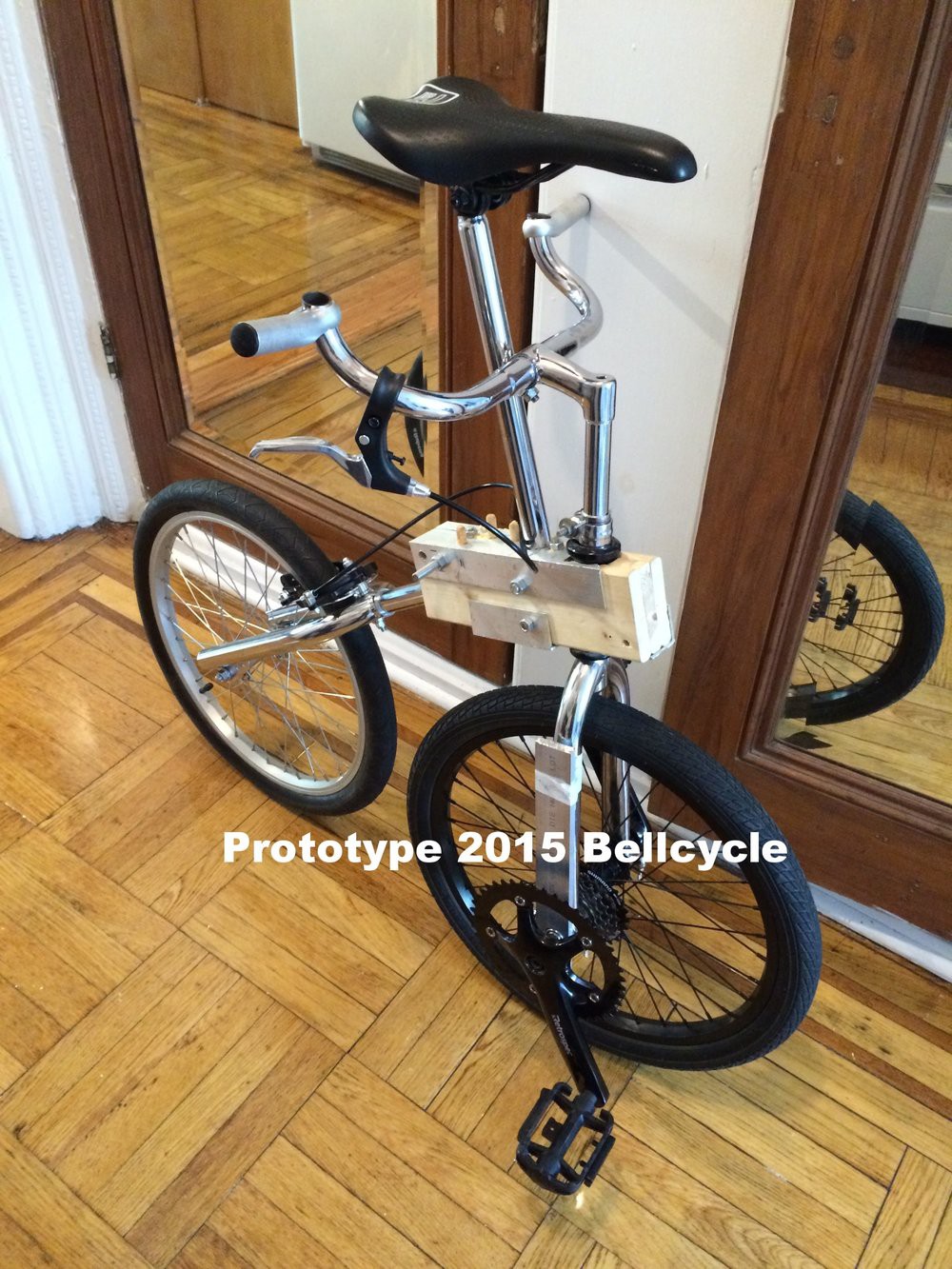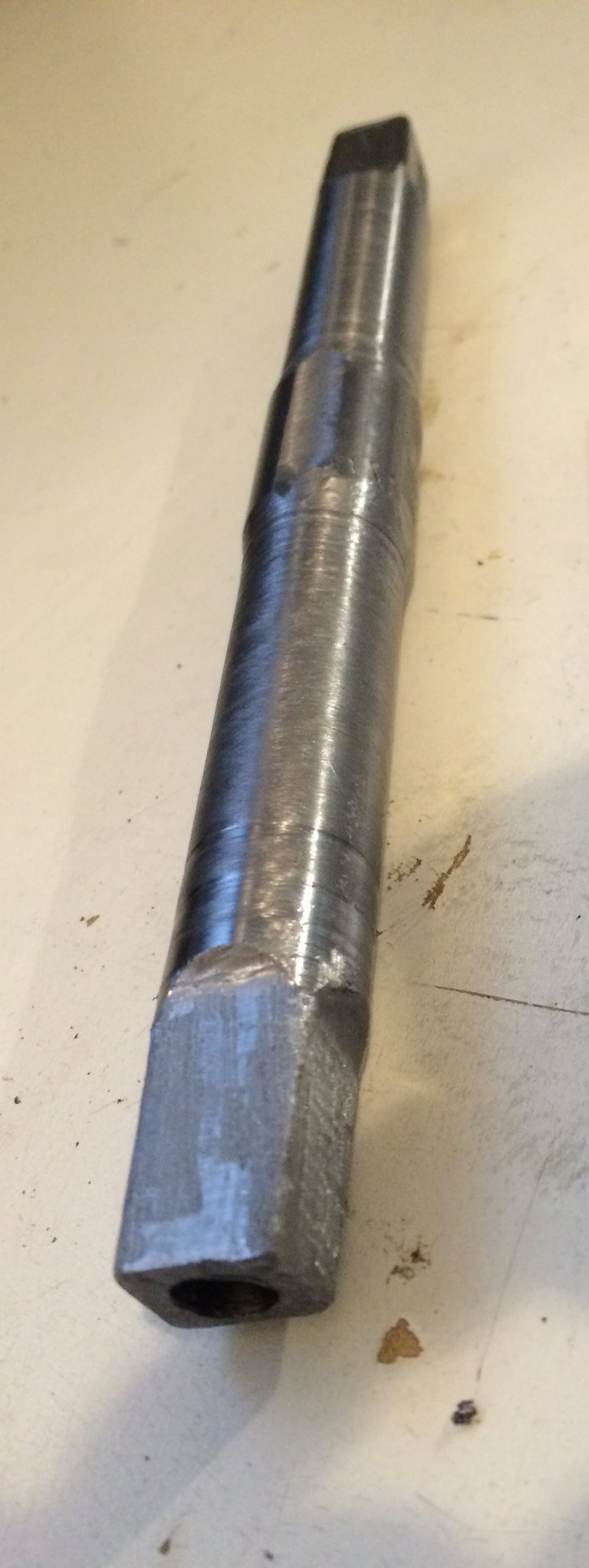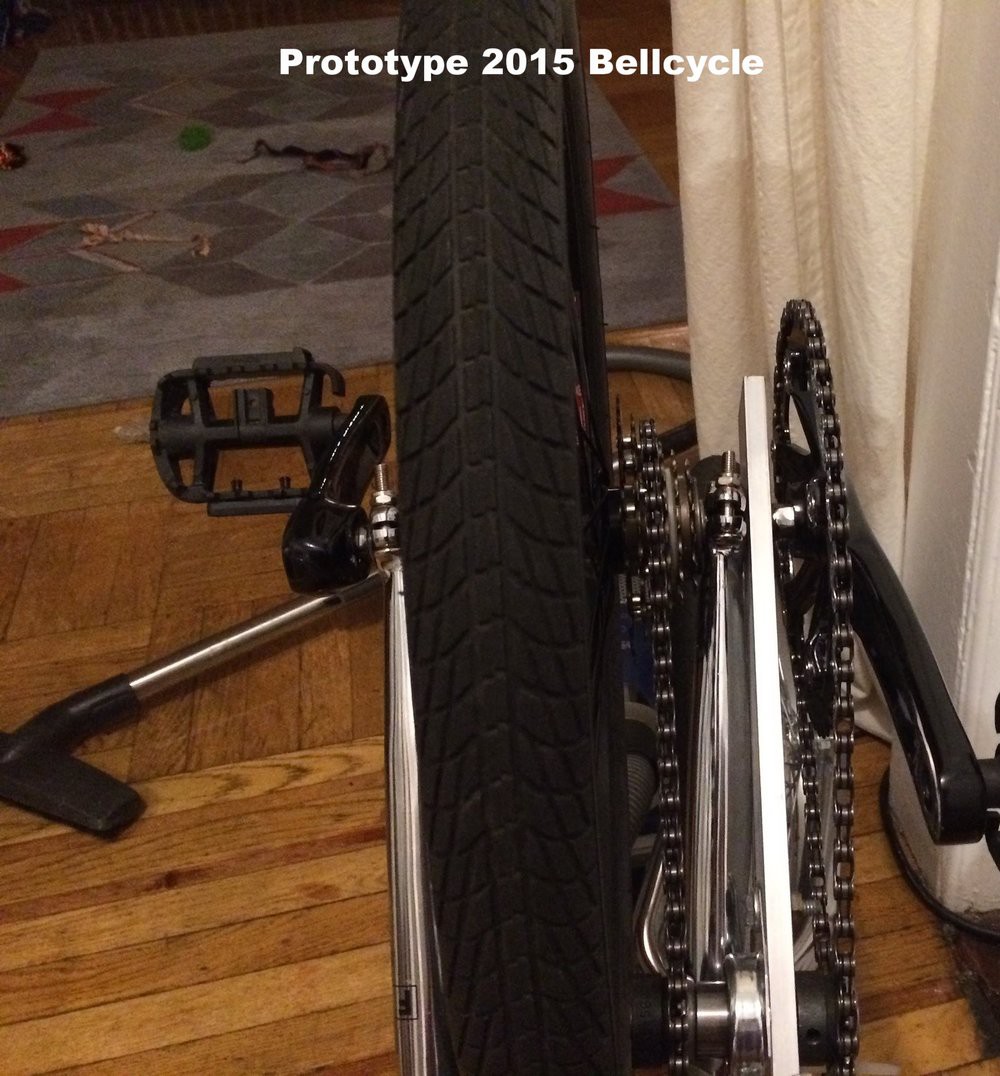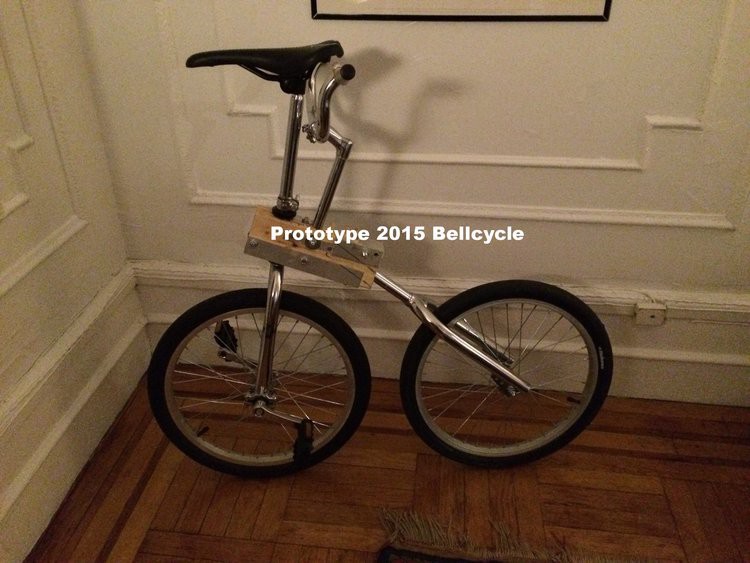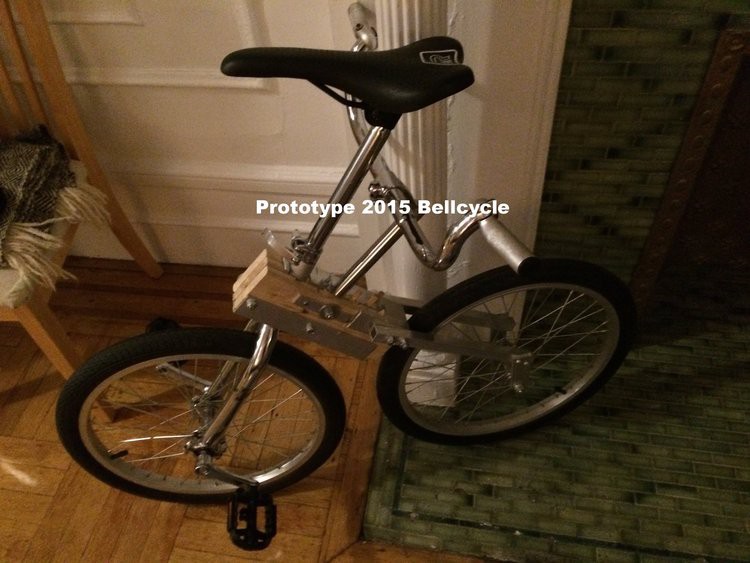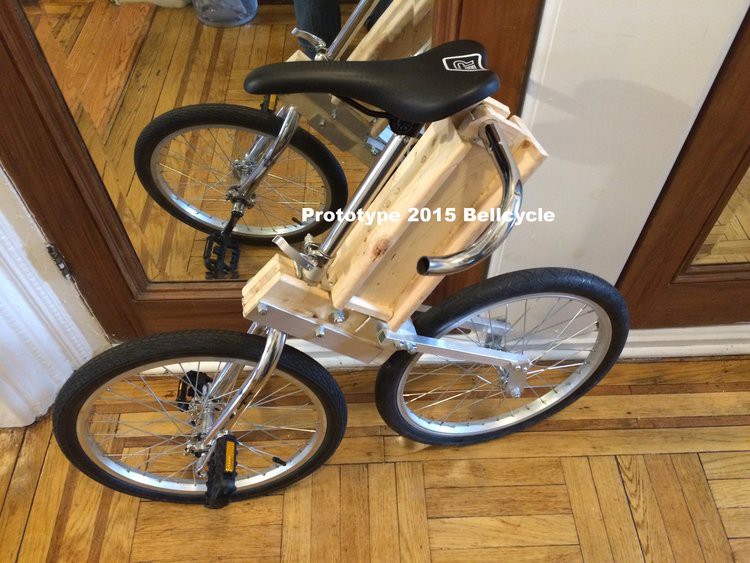-
V0.99 Gearing - 2017
09/19/2017 at 22:32 • 0 commentsOver the course of the past few prototypes I tried a lot of versions of the gearing.
![]()
For instance in this mess above you can see a front derailleur mounted so as to switch between the three gears on the pedal chainring. All the solutions were heavy and messy.
I decided to worry about the gearing later and focus on a less expensive, lighter and simpler solution. I realized that with jockey wheels, commonly used on rear derailleur's, I could route a simple loop of chain around all the required sprockets.
![]()
-
V0.75 Tandem Time- 2016
09/19/2017 at 22:26 • 0 commentsWhat would a tandem cycle with this design look like? I decided to return to the brazing torch and try it out. In the process I wanted to check some assumptions.
- Is the rear pivot/second degree of freedom really that important?
- What if the cycle is heavier with weight on the back?
![]()
![]()
![]()
![]()
First I tested with no pivot between the two wheels and no spring. It was as before, rideable but just. Not fun.
Then I cut the bars and added a pivot in. Rideable and fun.
![]()
I did find a picture of what looks like a similarish design for a tandem penny farthing. However, as far as I can see there is no rear pivot. So riding this was probably a little challenging.
-
V0.75B handlebar experiments, improvements, etc - 2016
09/19/2017 at 22:24 • 0 commentsWhat if the handlebars were higher?
![]()
What if the handlebars were in front?
![]()
What if the handlebars were in back and in front at the same time?
![]()
There were other iterations. Most were bad. The longer the handlebars the more flexibility in the steering which makes steering the bike like pulling on strings. However, the handlebars in front was actually nice, so lets keep that going forward.
Another change was that with the seat brazed onto the front of the cycle the weight was too far forward and the steering felt inaccurate. So I moved the seat inline with the handlebars on a bearing and fixed the rotation to the frame.
![]()
-
V0.5B Something is taking shape - 2015-2016
09/19/2017 at 22:24 • 0 commentsAfter the brazing of the frame the cycle was definitely interesting. But I felt that I had basically created the penny farthing https://en.wikipedia.org/wiki/Penny-farthing . And furthermore I could see why it is a relic of history, it is hard to ride. Specifically the steering + pedaling is just not as easy as a "regular" bicycle. Its not easier and its definitely not fun.
So I bought a caster wheel that you would find on an office chair and swapped that for the back wheel.
![]()
So simple. Well at first it didnt work because with 2 degrees of freedom, the rear end would just pivot to one side and stay there throwing you off the bike. But by adding a spring between the front wheel and the main frame of the bike the spring can absorb the pedal stroke.
The idea of the second degree of freedom in the rear wheel and the spring is that the dynamics of the cycle need some way of absorbing the lateral force of the pedal stroke without requiring the steering to constantly be fighting the pedals. As an example, the user pushes on the right pedal. Some component of the force is in the plane of the wheel and turns the crank propelling the vehicle forward. The other component is perpendicular to the plane of the front wheel and tries to turn the front wheel counter clockwise. With the caster wheel in the back coupled with the spring, when you push the pedals the rear section of the cycle will deflect towards the left on a right pedal stroke.
Well the office chair was a solid piece of plastic and made a racket. But by swapping it out for a pneumatic wheel the results were fun. There was work todo. At faster speeds there was instability. The frame had too much flex which could fight stability. But it was no longer a pain to ride, it was fun.
TODO: Improve on this idea
-
V.Beta the move to metal - 2015
09/19/2017 at 22:04 • 0 commentsI could almost see the previous version of the cycle working. I wanted to solidify some design changes and try making the cycle using more traditional methods. In the back of my mind I considered what it would take to build a version of the cycle to sell. For most bicycles sold on the market the frame construction methods are TIG welding of aluminum or steel, brazing of mostly steel, and composites involving epoxy and carbon fiber, wood, bamboo etc.
I wanted to see what brazing was like so after a quick trip to Home Depot for the WK5500 Brazing Torch Kit and a few how-to youtube videos V.Beta was born.
![]()
![]()
![]()
![]()
I wanted to have some flexibility in the design so that the geometry of the cycle could change. So the rear section of the cycle was disconnected from the front and I could adjust the angle of the "headset" based on this. I dont have to point out that my brazing skills are .... horrible. But somehow it held.
![]()
In the picture above you can see that I could adjust the piece of aluminum connecting to the rear wheel as well as the ping bolt connecting the two halves in order to change the headset angle.
Also note that the seat is connected to the front frame via a separate tube which is brazed to the front of the headset tube.
So its kind of rideable!!!
Issues
- Its not very easy to ride. The pedal interference, the down pedal pushes the steering, makes the bike hard to control. Its also tiring as you feel you are consistently fighting against yourself. TODO: Needs better steering
- Basically just a penny farthing at this stage. TODO: Get creative.
- Most of the weight is on the front. Panic braking is iffy. TODO: Move center of gravity backwards.
One benefit of the modular design, lets add in another wheel?
![]()
-
V.StillTinkering - 2015
09/19/2017 at 21:57 • 0 commentsFirst item on the list of things to fix from the first version of a bike was the gearing. That version had a direct connection between the pedals and the wheel hub. So for each pedal rotation so goes the wheel.
![]()
From the last post you can see that the handlebars and seat are now flipped. I.e. the seat is connected to the frame, as on a standard bicycle, and the handlebars steer the front wheel.
I wanted to keep the cycle compact and was drawn to the idea of the front wheel axle also being the pedal assembly. After some searching I was able to find a bicycle hub that could accommodate a solid axle which I machined myself. As you can see below, a little rough.
![]()
The pedals are connected to the chainring. From the chainring a loop of regular bicycle chain connects to a "jack" shaft https://en.wikipedia.org/wiki/Jackshaft which transmits the pedal force through another chain loop to the 9 speed freewheel.
![]()
With this arrangement the benefits are:
- Use regular bicycle chainrings, chains, pedals, etc to make prototyping as well as manufacturing inexpensive.
- Variability is also more simple as a variety of gearing options from front derailleurs, rear derailleurs, triple chainrings, single speeds, fixed gears and the like are all possible as they would on a more "conventional" bicycle.
A few downsides
- The jack shaft is made up of standard power transmission parts but they are not bicycle parts. This means they are a little heavier than preferred.
- The jack shaft arrangement takes up a significant amount of room on the right side of the wheel.
- Like a "conventional" penny-farthing your pedal motion conflicts with your steering input. So every if you are pushing down on the right pedal it tends to push the front wheel left, not great if to your left is a tree. TODO: Fix steering
0 LIKES
-
v.Tinkering/Messing Around- 2015
09/19/2017 at 21:45 • 0 commentsLots of good things start with silly ideas. In around February of 2015 ...
![]()
![]()
![]()
The following things came together to create v.Tinkering you see above.
- I bought and kind of learned how to ride a unicycle.
- I wanted a sub 100$ bicycle
- I wanted a small bicycle
- Things you build yourself > Things you buy. https://en.wikipedia.org/wiki/IKEA_effect
I dont have any video of the cycle above. But we can see
- It doesnt have any gearing, so its too slow. TODO: Add gearing
- The seat is connected directly to the front fork and hence front wheel. To move the front wheel, you are pushing against the handlebars which are fixed to the frame and using your butt/legs to move the front fork. This almost worked. But the small adjustments that are needed to keep a cycle up were difficult to make when it was your legs not your hands doing the steering. There are some cycles which have almost this configuration such as the python recumbent. But I didn't think I could make this arrangement easily rideable.
- It was small and light. And the total parts list was cheap. TODO: Keep this attribute
Bellcycles: A New Take on the Bicycle
A front wheel drive, compact, modular bicycle that you build yourself.
 Alex Bell
Alex Bell